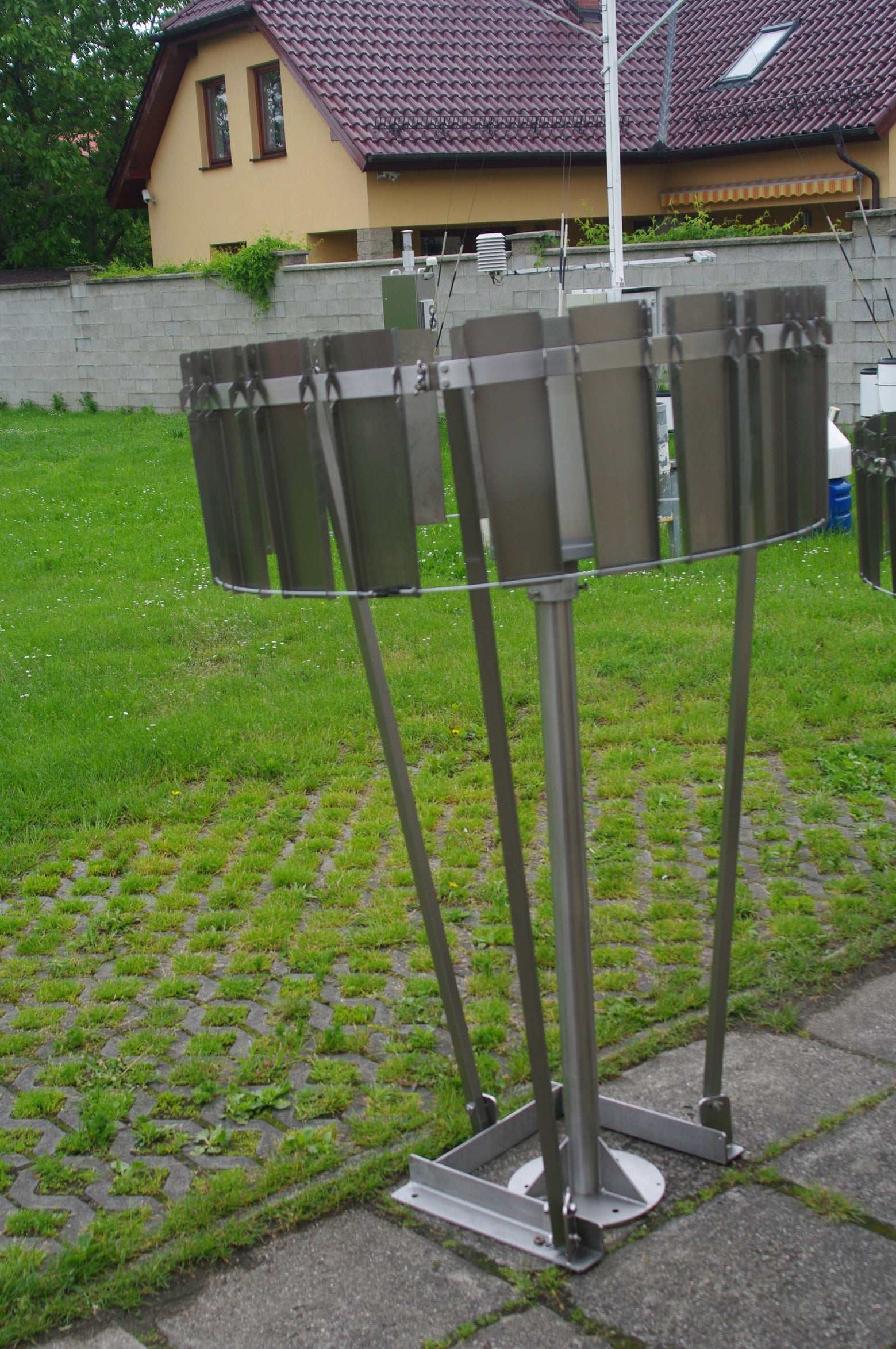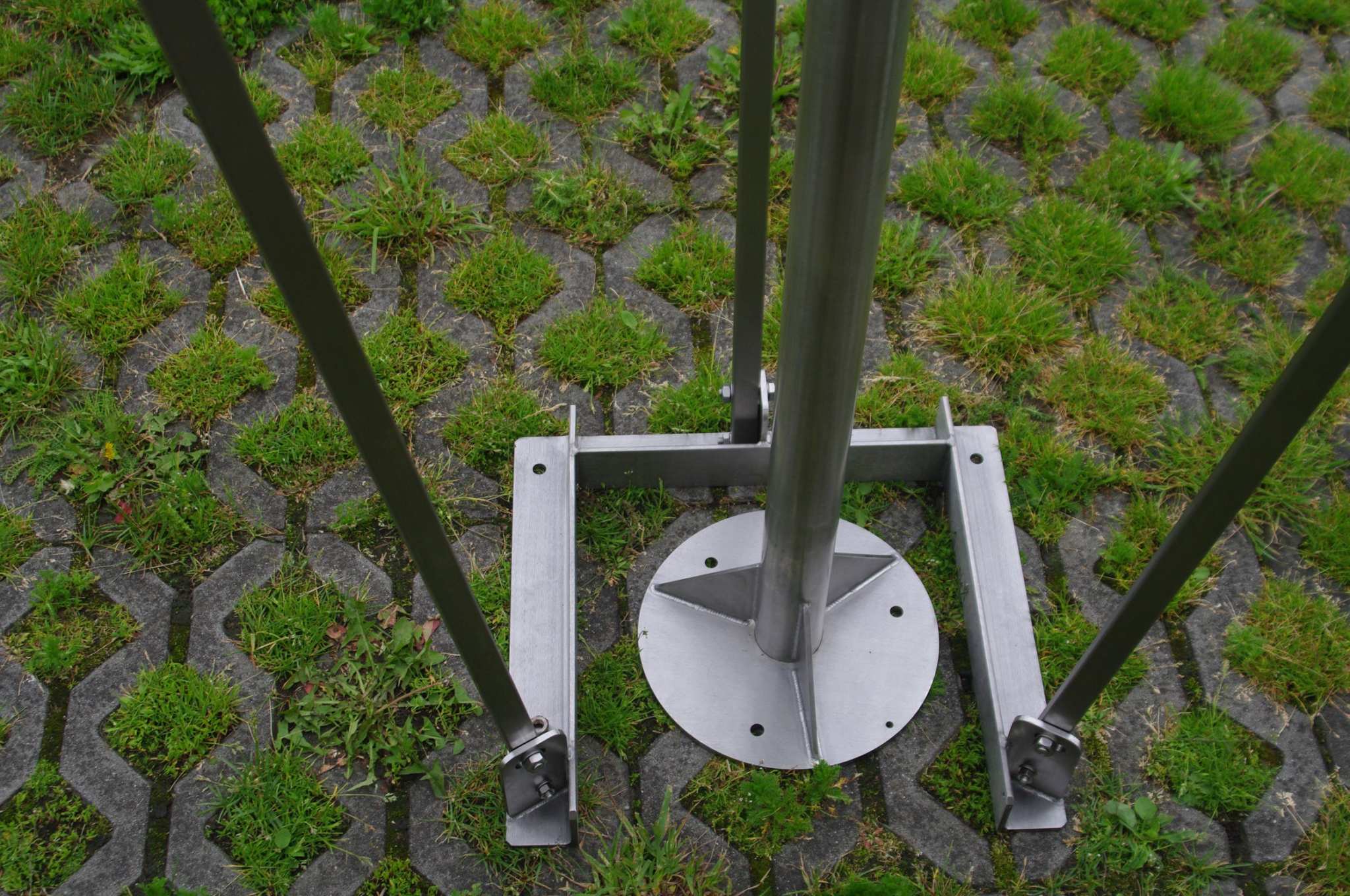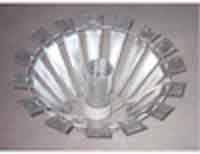
Rain gauge according to Tretyakov
2 products
Showing 1 - 2 of 2 products
Analog rain gauges open at the top, cylindrical Vessels that are readable scale. To increase accuracy, the aperture is often shaped like a funnelto capture a larger amount of precipitation or to reduce the influence of evaporation to reduce.
Rain gauge according to Hellmann
In meteorology, the precipitation gauge most commonly used in German-speaking countries is the Hellmann rain gauge, which was developed in 1886 by the Prussian meteorologist Gustav Hellmann This rain gauge is made of stainless steel or zinc sheet and has a collecting area of 200 cm² defined by a sharp-edged brass ring in accordance with the World Meteorological OrganizationThe rainwater flows through a funnel into a collecting can in the lower part of the rain gauge, thus largely protecting it from evaporation. For measurement, the collected rainwater is poured into a measuring cylinder, which allows measurements to an accuracy of 0.05 mm (1/20 mm). When snowfall is expected, a so-called snow cross is placed in the upper part to protect the falling snow from subsequent turbulence caused by strong winds. To take the measurement, the entire rain gauge is replaced with a second identical one and placed in a cool room with the lid closed until the solid precipitation has converted to the liquid state and can be measured as usual. Alternatively, a previously measured amount of water can be added to the collected solid precipitation, which must then be subtracted again after the measurement is complete.
There is also a smaller version with a collection area of 100 cm2 (without collecting can); in the mountains, rain gauges with a collection area of 500 cm² are also used.
There are also recording versions of the Hellmann rain gauge, which record the temporal progression of the rainfall over a period of 24 hours to a month without auxiliary power (pluviographs). Here, the water also flows into a collecting can containing a float that transfers the water level to a recording arm and a recording sheet mounted on a recording drum. After a rainfall depth of 10 mm, the collecting can empties, allowing even larger amounts of rainfall to be recorded.
Digital rain gauges
Rocker in a rain gauge
Automatic rain gauges usually use a "tipping bucket" or a tipping bucket, also called a seesaw. In both systems, a bowl fills with rainwater. At a certain weight, it tips downwards and empties. The amount of precipitation can be calculated from the number of tilting movements. The tilting movements are often carried out using a magnet on the tilting device and a magnet fixed opposite. Reed contact electrically detected. The fundamental difference between a tipping bucket and a tipping scale lies in their design. The tipping bucket is shaped like a spoon and can only hold water on one side. The tipping scale is more sensitive and has a two-part measuring chamber. This prevents raindrops from being lost during the actual tipping process, as can happen with a bucket.
A more recently developed measuring method is the weighing principle. Here, the precipitation falls into a collecting tray mounted on a sensitive scale. Since 1 ml of water weighs almost exactly 1 g, the amount of precipitation can be read directly without any calculations. The advantage of this system is that a heating device is not required, as solid precipitation can be measured immediately and does not have to be melted first. Another more recent measuring principle is the per Ultrasonic measured number and size of raindrops, hailstones or snowflakes.



